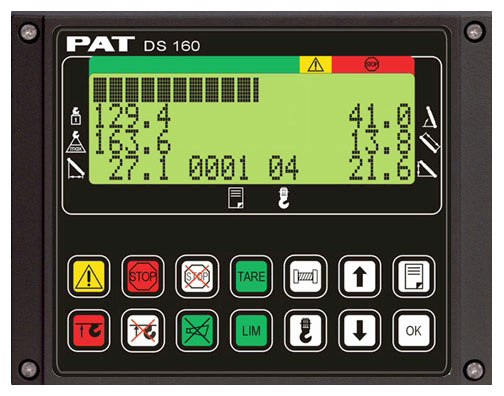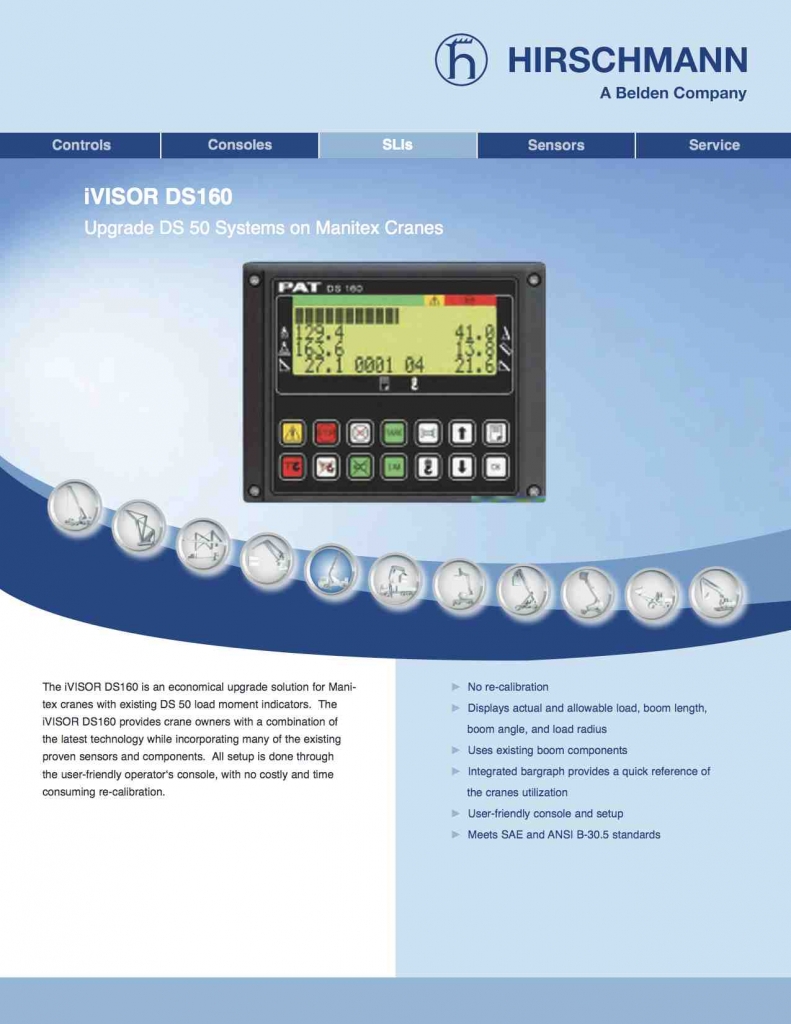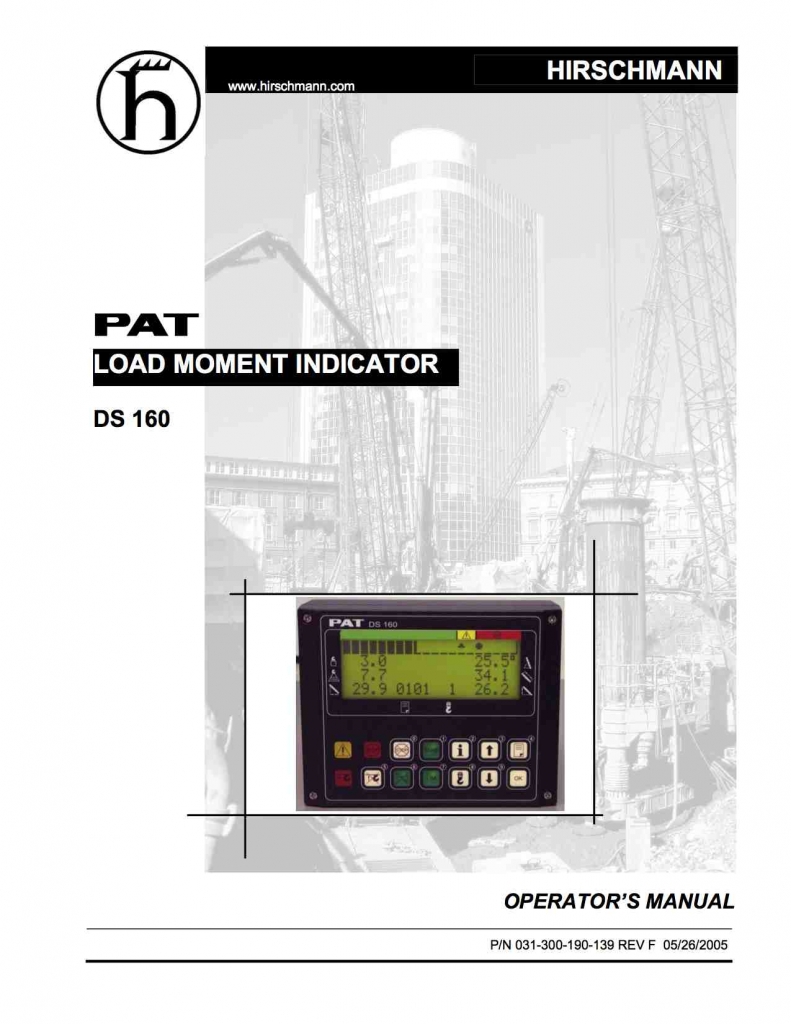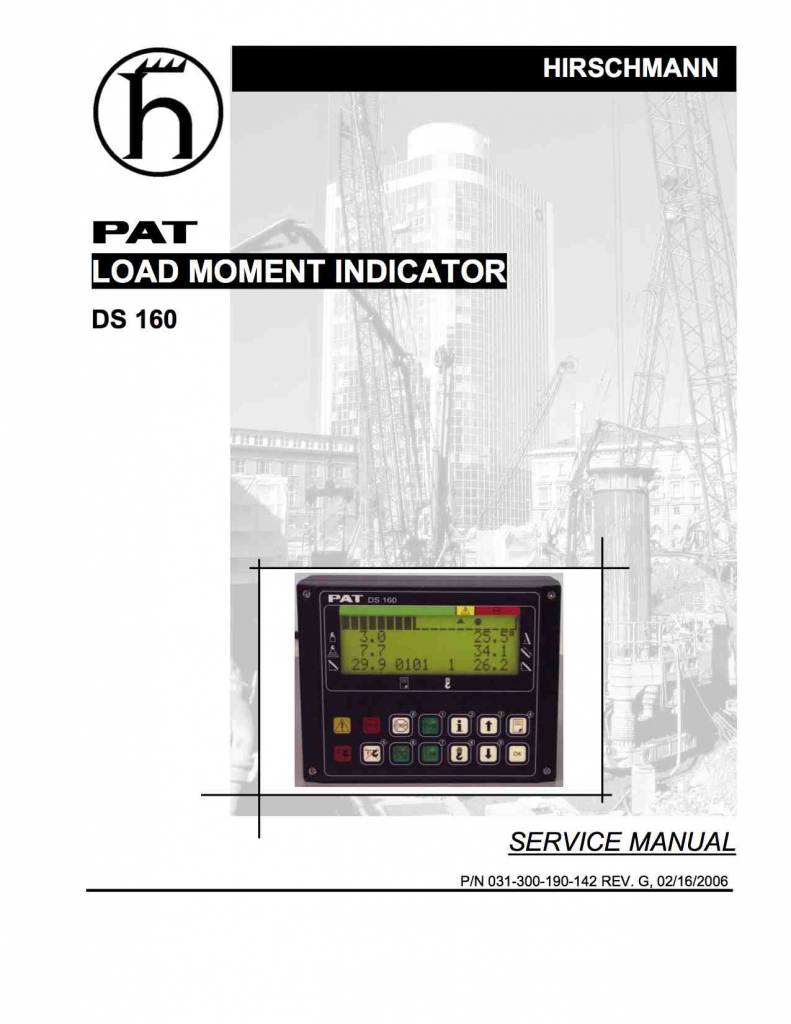PAT Hirschmann DS 160

PAT Hirschmann DS 160 Advantages
- No re-calibration
- Displays actual and allowable load, boom length,boom angle, and load radius
- Uses existing boom components
- Integrated bar graph provides a quick reference ofthe cranes utilization
- User-friendly console and setup
- Meets SAE and ANSI B-30.5 standards
Hirschmann DS160 Documentation
PAT Hirschmann DS160 General Information
The PAT Hirschmann DS 160 Load Moment Indicator (LMI) DS 160 has been designed to provide the crane operator with the essential information required to operate the machine within its design parameters. The LMI provides the operator with information regarding the length and angle of the boom, working radius, rated load and the total calculated weight being lifted by the crane.
The DS 160 LMI basically consists of a central microprocessor unit, operator’s console, length and angle sensor, pressure transducer sensor, and anti-two block switches. The system operates on the principle of reference/real comparison. The real value, resulting from the load measurement is compared with the reference data, stored in the central processor memory and evaluated in the microprocessor. If non permitted conditions are approached, the DS 160 LMI will warn the operator by sounding an audible alarm, lighting a warning light and locking out those functions that may aggravate or worsen the crane’s condition.
DS160 System Description
The PAT Load Moment Indicator DS 160 consists of a central microprocessor unit, operating console, length/angle sensor, pressure transducers, and anti-two block switches.The system operates on the principle of reference/real comparison. The real value, resulting from the load measurement is compared with the reference data, stored in the central processor memory and evaluated in the microprocessor. When limits are reached, an overload warning signal is generated at the operator’s console. At the same time, the crane functions, such as hoist up, boom down and telescoping out will be stopped.The fixed data regarding the crane, such as capacity charts, boom weights, centers of gravity and dimensions are stored in memory chips in the central processor unit. This data is the reference information used to calculate the operating conditions.The length/angle sensors inside the cable reel, which is mounted on the boom, measure the boom length and angle. The boom length is measured by the cable reel cable that also serves as an electrical conductor for the anti two-block switches.The crane load is measured by pressure transducers attached to the piston and rod sides of the hoist cylinders.









